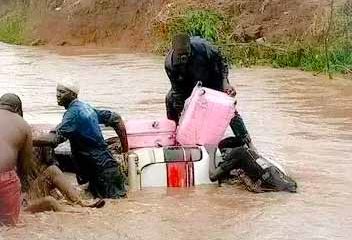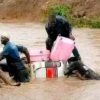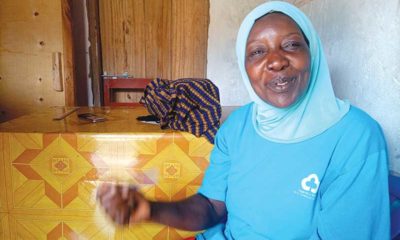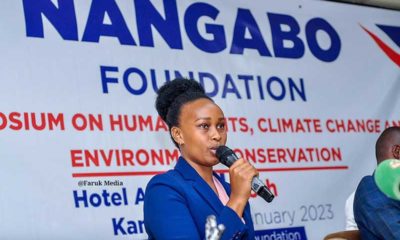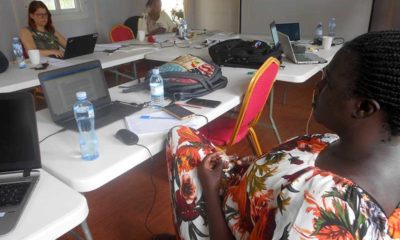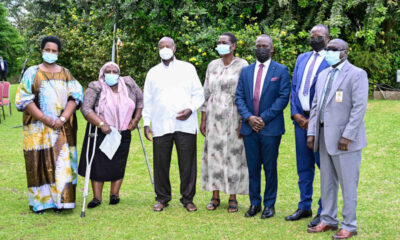News Feature
Lake Victoria flooding, the boomerang effect of human activity
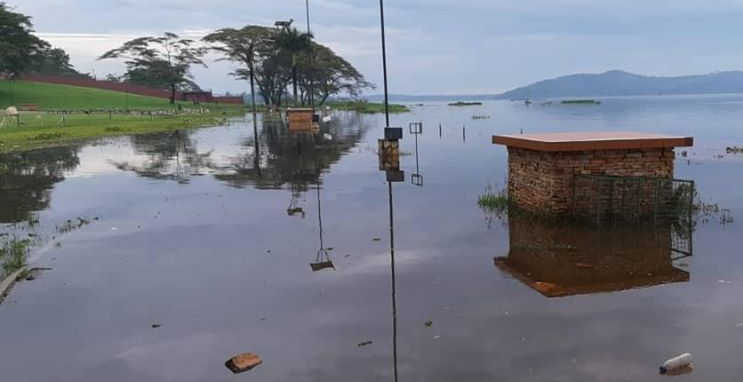
Remember: This famous lakeside area at Speke Resort Munyonyo that used to host cocktails has now been reclaimed by the lake

Lake Victoria, Africa’s largest freshwater body is now filled up to the brim, hence the massive overflow/flooding, after centuries of sedimentation with soils, sand, urban wastes, industrial effluent, current extraordinarily heavy rains and flood-waters from the East African rivers–largely precipitated by Climate Change.
The lake is no longer just a resource for the continent’s intensive socio-economic activities, but it is increasingly becoming a victim of climate change which has been adversely impacting the Great Lakes’ region for over 20 years.
The worst case of this Global Warming effect in this densely-populated region of —never experienced in half a century—is the flooding of its shores, killing and displacing hundreds of thousands of encroachers and non-encroachers alike.
Besides centuries of sedimentation, Senior Presidential Advisor on Media, Joseph Tamale Mirundi says there are also five ships of the Uganda Railways Corporation (URC) at the bottom of Lake Victoria, after they sank over many years in marine accidents on this transboundary water body.
Mirundi, a journalist and a formerly Press Secretary to the President of Uganda at State House, has openly, in live Radio and TV talk shows, challenged the Ministry of Works and Transport, over failure to remove the ship wrecks, in which the country has lost billions worth of valuable assets and revenue.
There has never been an official dismissal of Mirundi’s long-held challenge, over which he locked horns with former Works Permanent Secretary, Charles Muganzi who once sued him [Mirundi] for defamation.
According to water experts, the lake Victorian levels have hit a new record high of 13.42 metres, surpassing the historic 13.41 highest mark ever-reached on May 12, 1964. Uganda and Kenya, are hardest-hit by flood-waters carrying large loads via rivers from Kenya, Tanzania, Rwanda, Burundi, Uganda and the Democratic Republic of Congo (DRC) as major depositors. This lake is a huge trans-boundary resource with about 23 supply-rivers, but has only one exit via River Nile at Jinja-Uganda.
The Kagera/Akagera is the largest river flowing into Victoria [in Uganda] through Tanzania—having eroded the mountainous Burundi and Rwanda. And from Kenya, flows in rivers: Sio, Nzoia, Yala, Nyando, Sondu Miriu, Mogusi, and Migori, while Uganda feeds Victoria via: Nyabarongo, Katonga, Ssezibwa. Other rivers converging into Lake Victoria include Simiyu-Duma, Grumeti-Rwana, Mara, and Gucha-Migori.
State Minister for Environment Beatrice Atim Anywar says over 170,000 households have been directly affected by the latest wave of flooding Lakes Victoria and Kyoga, as more land, homes and farms continue to sink under water.
She confirms that Uganda and the region are currently soaked under extraordinarily heavy rains pounding the region since 2018.
“Our experts have told us that as a result of Climate Change, these ferocious rains shall persist for the next three years. We’ve assessed the water-overflow, and it is extensive.
Both encroachers and non-encroachers are displaced and urgently need to be moved away from the shoreline to higher grounds.

Destruction, Serena Hotel Kigo, One of the most iconic places is now filled with water
“Government will resettle those genuinely displaced, but evict and prosecute encroachers,” says Anywar, a celebrated environmental/conservation defender.
She adds that Government is to erect border-marks of the gazetted 200-metre perimeter demarcation from the shoreline. “People whose developments are within 200-metres are encroachers. They’ll be evicted,” Anywar warns. She quotes the national environmental law restricting any human activities within 200 metres and 100 metres in lake-shores and river banks, respectively.
She says over time, communities have settled in these restricted wetlands, they erroneously regard as waste-lands, while others do vehicle-repair, motorcar-washing, fish-markets, sand-excavation and have cultivated the wetlands that filter/clean incoming waters.
The lake is considered shallow, with a maximum depth of approximately 80 metres (260 ft) and an average depth of 40 metres (130 ft). The Mayor of one of Uganda’s most threatened lake shore city of Entebbe, Vincent Kayanja Dipo who is a member of Lake Victoria Regional Local Authorities Co-operation (LVRLAC) whose secretariat is located in Entebbe, confirms that many parts of his city have been submerged.
“It’s very serious,” he remarked, signaling greater danger ahead in a recent interview with Mengo-based Central Broadcasting Service (CBS) radio. He says experts have informed LVRLAC that Lake Victoria’s base has been filled due to many years of sedimentation and water.
“Our governments should urgently conduct a comprehensive scientific investigation by a multi-expertise team of researchers, right from the lake’s bottom, with a view to establishing the exact magnitude of the sedimentation and recommend solutions, including desilting.
Because we suspect the lake has silted up, and cannot any longer hold extra loads of water and other sediments.” The Lake, he adds, nowadays fills up and overflows whenever it rains. As LVRLAC, we want science-based solutions, including possible desilting,” says Mayor Kayanja.
However, his counterparts, the mayors of Kampala’s divisions that border the lake have vowed to resist evictions. Eng. Nsubuga Balimwezo, the Mayor of the City’s Eastern Nakawa division vowed thus: “I’ll not accept government victimizing our residents who have lived there for 20-30 years; where was government when people settled?” His counterpart, the Mayor of the southerly Makindye Division, Ali Nganda-Mulyanyama agrees too, to protect those labeled encroachers.
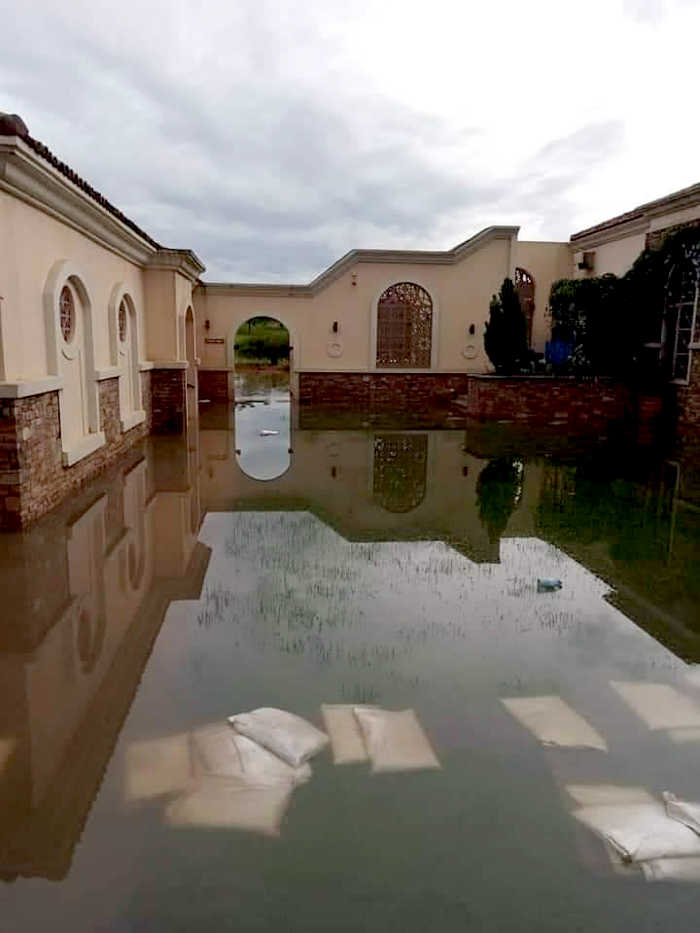
Unbelievable; Part of Serena hotel kigo
But government in early 2020 issued a red alert to shoreline communities that the lake’s levels were rapidly rising, and that around February-March it would overflow its shores due to heavy unrelenting rains that begun 1-2 years ago and would climax mid-year [2020], according to state-run Uganda National Meteorological Authority (UNMA).
However, the highly-infectious COVID-19 that struck East Africa in Feb-March 2020, has overshadowed this silent disaster quietly ravaging the region. Heavy rains in East Africa’s hinterland and within Lake Victoria basin, have left many families homeless mainly in Uganda and Kenya. The flood waters are sweeping away farmland, carrying with it crops, livestock and homes.
Also not spared are: fish-breeding and landing sites, vegetation, transport infrastructure, holiday beaches/resorts and hotels mainly in the two countries.
However, regional lake authorities have expressed concern and proposed strategies to solve the water upsurge. The LVRLAC in Entebbe and the Kisumu-based Lake Victoria Basin Commission (LVBC), have proposed emergency measures to avert more deaths and destruction.
Today, about 30 million people in Rwanda, Burundi, Uganda, Kenya and Tanzania rely on the lake for fishing, irrigation and, in Uganda, electricity. Huge population growth is expected in the region. All these people will increasingly rely on the lake for a very long time to come. LVBC Executive Secretary, Ali-Said Matano says urgent action is needed to support over 200,000 people already displaced in Kenya and Uganda.
Authorities in Uganda are warning of forceful eviction of encroachers as one of the first steps to managing the challenge. Environment State Minister Anywar and her Executive Director of the state-run National Environment Management Authority (NEMA), Dr. Tom Okurut, say the affected residents including vendors must leave the encroached land before evictions.
Okurut said cholera, bilharzia and malaria have broken out, a reason they’ve ordered people to leave. But a private water engineer, Apollo Buregyeya argues that government protection of the environment is wrongly premised:
“….Its not only swamps you should protect. The marshlands are equally important to the stability and regulation of the lake water levels. They store a lot of water and release it to the lake at a rate only nature can predict.
They also work like the kidneys of the lake system. When you give them away for rice-farming, you shift the equilibrium of both the water-quality and the water levels of the lake. Please stop the rice farms at Lwera. It doesn’t matter what your experts at NEMA tell you. They are not good custodians,” he told off government ministries and its agencies.
However, towards end of May, one of the biggest fish-landing sites, Mulungu located near Kampala, was evicted. Ggaba, a nearby site, is next in line of fire before end of June, say officials in NEMA and Kampala Capital City Authority (KCCA).
Other impacts of the rising water levels are; dislodgement of papyrus mats technically known as suds, from the encroached shorelines resulting into huge mass of floating Islands which are dangerous to hydropower infrastructure and transportation on the lake.
Ugandan President, Yoweri Museveni recently rushed to the eastern River Nile source city of Jinja, where floating vegetation eroded by the river, interrupted electric power generation and plunged the whole country into a blackout, after trees and grasses blocked water from flowing into the turbines of Nalubale dam.
Then President Museveni assured the nation that extra damage that could have been caused by the rise in the lake level, was averted because Uganda has expanded the exit gates to spill water into River Nile [and onwards to the Mediterranean Sea]. In 1964 when the water level reached 13.41 metres, there was only one exit gate allowing out only 1,300 cubic metres per second.
Today, Uganda has two exit gates, and now releases up to 3,000 cubic metres of water. “….it [water] will not damage our dams but people near the shore and river banks should get out, they could be swallowed up…. People should settle 500 meters from the shore,” says the Ugandan President. The country’s only airport highway is also threatened with submerging by the lake’s waters. The lake’s level at this point is 13.40 metres high.
Lake Victoria occupies 236,000 square kilometres and serves 35 million people, who mainly live in lake basin’s major urban areas of: Kampala, Jinja, Entebbe, Kisumu, Mwanza, Musoma and Bukoba cities in Uganda, Kenya and Tanzania, respectively.
These get their water, fish, electricity and sand supplies among others from the lake, but give back urban and human wastes, hotel and factory effluent and chemical pollutants. In addition, land degradation especially its encroached wetlands where huge soil amounts are eroded daily, end up in this moderately deep lake.
This, officials say, have filled up the lake—a key reason for the current fierce water backflow, bringing with it snakes, crocodiles, fish, crabs, mosquitoes and snails. Some islands are also sinking—part of where the broken-off pieces of land currently floating on the lake—are coming from, like the palm oil-rich Kalangala and pineapple-ladden Bussi islands.
East Africa’s only Ngamba chimpanzee sanctuary in Uganda, is one of those islands facing the threat of being submerged. Farmers and fisherfolk are the hardest-hit by this unending calamity.
According to the Water and Environment Ministry, the water level rose up from the average 12.00 meters to 13.32 meters as of 30th April 2020, and in May to 13.42 metres.
The rise of 1.42 meters was attained in a period of 6 months. In spite of the losses and threats, the Ugandan leader June 4, 2020 contradicted his recent directive for destruction of all wetland encroachments, when he expressed a soft spot for industrial establishments.
“It isn’t wise to destroy industries in wetlands as they’re very expensive to build and they provide jobs to our youths,” Museveni remarked in a State of the Nation Address.
This was a major digression from his recent directive to the Water and Environment Ministry, to take drastic action against all encroachers. Uganda’s inland lake, Kyoga [in eastern region]—a recipient of waters from Victoria via River Nile—too has overflowed her shores and submerged large tracts of farms, homes, fishing villages and roads.
The historic entry-point of Euro-Christian missionaries into Uganda in 1800s, the Kigungu Shrine, in Entebbe, is the latest loss of an asset to be submerged under Lake Victoria’s water. There is no quantified monetary cost/impact of the regional destruction so far, but officials quote it in billions of dollars.
Comments



